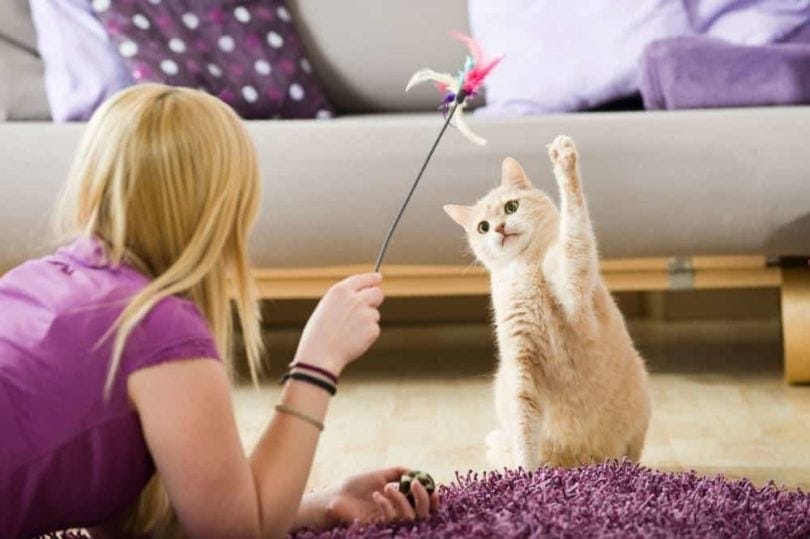The Art of Feline Care refers to the strategic approach to cat ownership, ensuring that our feline friends receive love, care, and a fulfilling environment. Understanding this concept is vital for both new and seasoned cat owners who want to provide their pets with the best possible life.

cat raising strategies for beginners
Understanding Your Cat’s Needs
Caring for a cat requires more than just feeding and sheltering them. It involves understanding their behavior, health needs, and emotional well-being. This section dives deep into what every cat needs from their human companions.
Behavioral Insights
Cats are complex creatures with unique personalities and behaviors. Understanding these can greatly enhance your relationship with your pet.
Firstly, it’s crucial to recognize that cats communicate through body language. A relaxed cat may show its belly or knead on soft surfaces, while an agitated one may swish its tail or flatten its ears. Observing these signals can help you respond appropriately to their moods.
Secondly, enrichment is key to keeping your cat happy. Cats need mental stimulation through playtime and exploration. Engaging them in interactive games or providing scratching posts can satisfy their natural instincts and prevent destructive behavior.
Finally, respect their space. Cats often enjoy solitude and may seek out quiet areas to retreat to when they feel overwhelmed. Allowing them to have their safe spots will create a trusting bond between you and your feline friend.
Health and Nutrition
To implement an effective strategy for cat care, it’s vital to focus on health and nutrition. A balanced diet tailored to your cat’s specific needs plays a significant role in their overall well-being.
Firstly, cats are obligate carnivores, meaning that meat constitutes a crucial part of their diet. High-quality protein sources should be prioritized, as they support muscle development and energy levels. Additionally, consult with your veterinarian to determine the right type and amount of food suitable for your cat’s age, weight, and health status.
Secondly, regular veterinary check-ups are essential. These ensure vaccinations are up to date and facilitate early detection of any potential health issues. Preventative care can save you from costly treatments down the line and, more importantly, keep your furry friend healthy.
Finally, hydration is often overlooked but equally important. Ensure that your cat has constant access to fresh water. Some cats prefer running water, so consider investing in a cat fountain which can encourage better drinking habits.
Socialization and Interaction
Socializing your cat is an integral part of their happiness and development. Unlike dogs, cats have different social structures and interaction styles.
Firstly, start socialization early if you have a kitten. Exposing them to various people, environments, and even other pets can help them grow into well-adjusted adults. Use positive reinforcement techniques like treats and praise to reward brave interactions.
Secondly, for adult cats, patience is key. If you adopt an older cat, take your time allowing them to adjust to their new home. Create a welcoming environment, and let them come to you when they feel ready. Gradually introduce them to family members and visitors to reduce stress.
Lastly, maintain a consistent routine. Cats thrive on predictability; having set feeding times and play schedules can reduce anxiety and foster a sense of security in your pet.
Creating a Safe and Enriching Environment
An enriching environment is fundamental to a cat’s physical and psychological health. This section outlines how to make your home a perfect haven for your feline companion.
Space Considerations
When designing a cat-friendly space, consider vertical spaces such as shelves, cat trees, or window perches. Cats love to climb and observe their surroundings from high vantage points, which satisfies their hunting instincts.
Additionally, providing cozy hiding spots where your cat can retreat helps them feel secure. This could be a soft bed placed in a quiet corner or a box where they can curl up snugly.
Lastly, avoid clutter and dangerous items within reach. Regularly check your living space for anything that might pose a risk to your cat, such as small objects they might swallow or toxic plants.
Toys and Playtime
Investing in a variety of toys is crucial for a cat’s physical and mental stimulation.
Start by selecting toys that mimic the movements of prey. Wand toys, laser pointers, and small balls can engage your cat’s hunting instincts and provide much-needed exercise. Rotate the toys regularly to maintain their interest and excitement.
Involve yourself in playtime. Spend at least 15-20 minutes each day engaging with your cat. This not only strengthens your bond but also fulfills their need for interactive fun.
Lastly, don’t underestimate the power of DIY toys. Simple items like crumpled paper or cardboard boxes can provide endless entertainment for cats.
Outdoor Exploration
While indoor cats generally live longer and healthier lives, some cat owners choose to allow their pets limited outdoor time. If this option appeals to you, safety must be your top priority.
One approach is creating a secure outdoor enclosure or ‘catio’ that allows your cat to explore without the risks associated with free-roaming. This gives them access to fresh air and natural stimuli while keeping them protected from predators and traffic.
Alternatively, consider leash training your cat. With patience and proper harness fittings, many cats can learn to enjoy outdoor walks alongside their humans. Always supervise them closely during these outings to ensure their safety.
Training Your Cat Effectively
Training your cat is not just about teaching tricks but also correcting unwanted behaviors and establishing boundaries. In this section, we explore effective strategies for successful cat training.
Positive Reinforcement Techniques
Positive reinforcement is the cornerstone of training your cat effectively. When your cat displays desired behavior, reward them immediately with treats, affection, or praise. This encourages them to repeat the behavior in the future.
For instance, if you want to train your cat to use the litter box properly, consistently rewarding them for using it will reinforce this behavior. Over time, they will associate the litter box with positive outcomes.
Moreover, keep training sessions short and enjoyable. Cats have shorter attention spans, so aim for brief periods of focused interaction. Ending on a positive note will leave both you and your cat feeling accomplished.
Correcting Problem Behaviors
Understanding why your cat is exhibiting problematic behaviors is essential for correction. For instance, if your cat scratches furniture, it may be due to a lack of appropriate outlets for their instincts.
First, redirect their behavior by providing scratching posts or pads. Place them near the furniture they are currently scratching to encourage usage.
Second, if your cat is excessively meowing, try to uncover the cause. They may be seeking attention, bored, or facing health issues. Addressing their needs will often lead to a decrease in unwanted vocalizations.
Lastly, remember to stay patient. Behavior modification takes time, and consistency is key. Avoid punishment as it can damage the bond of trust between you and your cat.
Establishing Boundaries
Setting clear boundaries is crucial for a harmonious household. Cats thrive on structure, so establishing rules early on can prevent confusion later.
Whether it’s restricting access to certain areas or determining whether they are allowed on counters, be consistent in enforcing these boundaries. Use gentle redirection when necessary, and always provide alternative options for them to explore.
Using deterrents like double-sided tape or citrus scents can help discourage unwanted behavior. However, these methods should be used sparingly and in conjunction with positive reinforcement to foster a loving, safe environment.
FAQs
What is the best food for my cat?
Choosing the best food depends on your cat’s age, health, and dietary preferences. Opt for high-quality commercial cat food rich in protein and low in fillers. Consult your veterinarian for personalized recommendations based on your cat’s specific needs.
How much space does my cat need?
Cats are adaptable, but they do benefit from ample space to explore and play. Providing vertical and horizontal space, along with hideaways, enriches their environment. Even in smaller homes, creating climbing opportunities can significantly enhance their living area.
Should I let my cat outside?
While outdoor access can be beneficial, it comes with risks. Consider building a catio or walking your cat on a leash for safe outdoor experiences. Always weigh the pros and cons based on your cat’s personality and your neighborhood.
How do I socialize a shy cat?
Start slowly with shy cats. Allow them to approach you at their own pace and provide them with safe hiding places. Gradual exposure to new people, sounds, and environments, paired with positive reinforcement, will help them build confidence over time.
When should I take my cat to the vet?
Regular veterinary check-ups are essential for maintaining your cat’s health. Schedule visits at least once a year for routine examinations and vaccinations. If you notice any sudden changes in behavior, appetite, or litter box habits, contact your vet promptly.
Conclusion
The encompasses a comprehensive understanding of cat care that goes beyond mere ownership. By recognizing your cat’s behavioral nuances, meeting their health needs, creating an enriched living environment, and employing effective training techniques, you can foster a lasting and rewarding relationship with your feline friend.
Ultimately, the love, care, and attention you provide will contribute to a happy and fulfilling life for your cat. Embrace the journey of being a cat owner, and enjoy the companionship that comes with it.


